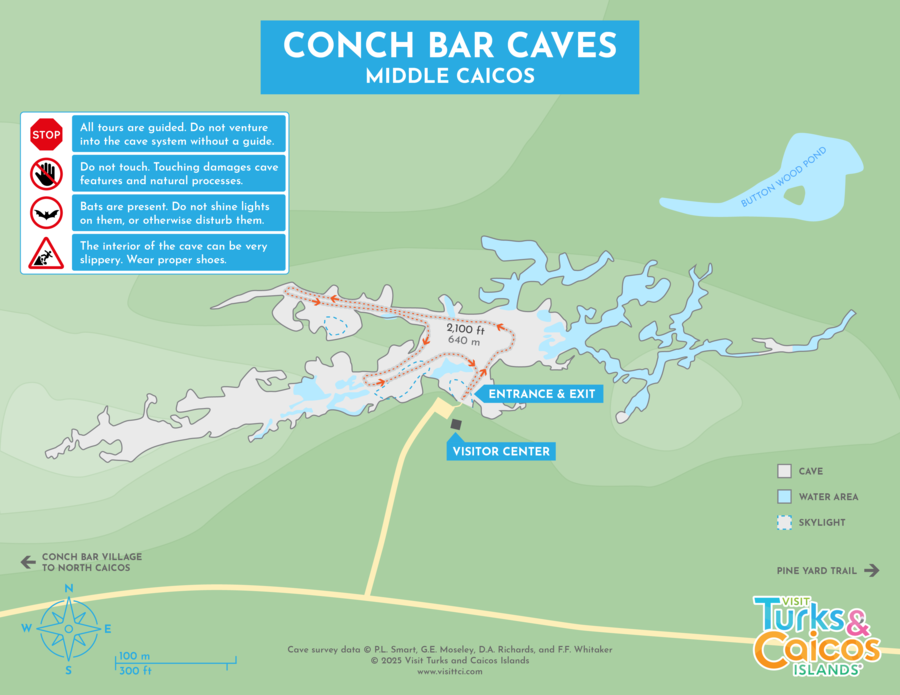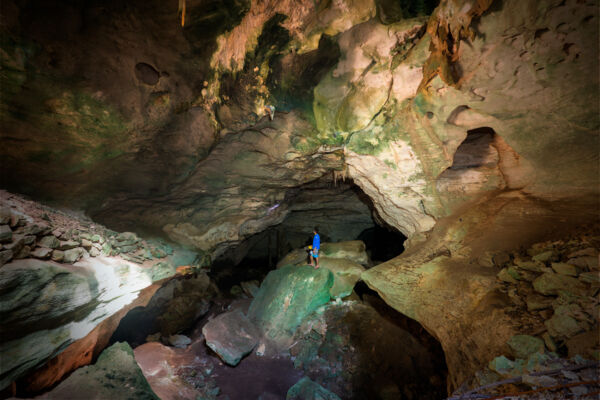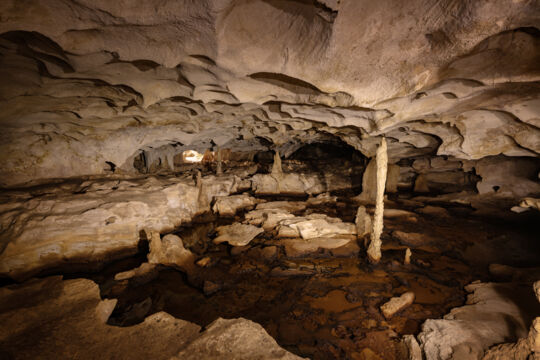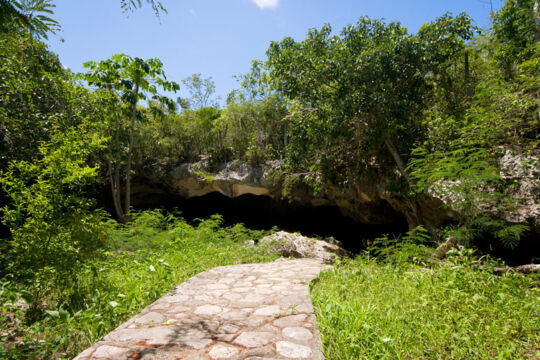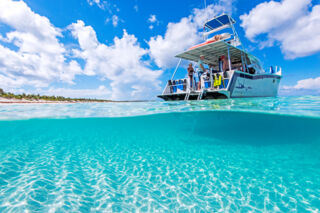Conch Bar Caves
Airport Road, Conch Bar, Middle Caicos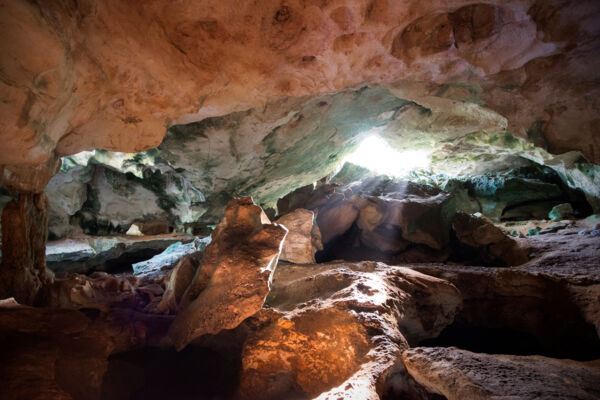
Conch Bar Caves on Middle Caicos is the largest dry cave system in the Bahamas–Turks and Caicos island chain and is a Turks and Caicos national park. The cave system is named after the village of Conch Bar nearby and is managed by the Turks and Caicos National Trust.
History and Environment
Conch Bar Caves is a Karst limestone cave system, formed over extremely long periods of time by the dissolution of the soft limestone by mildly acidic water containing carbonic acid. The cave system is considered mid-sized on a global scale, and is a live cave system. Conch Bar Caves has many of the common cave features found in caves in other regions, including stalactites, stalagmites, and columns, along with pools that fluctuate with the ocean tide.

The cave’s recorded history started when guano (bat manure) mining began in the 1880s. Guano was in great demand at the time as a fertilizer, and the guano from Conch Bar Caves was exported from the Turks and Caicos. During these initial diggings, skeletal remains of animals and Lucayan Indian artifacts were found, but unfortunately, these findings weren’t preserved. Recent archeological excavations at the nearby Indian Cave site uncovered skeletons of extinct animals, including a giant iguana, a tortoise unique to the Turks and Caicos, and owls, hawks, and other birds, so the discoveries in Conch Bar Caves were probably much of the same. Carved and painted names and dates from the guano mining period can still be seen in the cave today.
Four species of bats currently live in Conch Bar Caves, along with several native species of crustaceans, including some isopods.
Current Site and Visitor Information
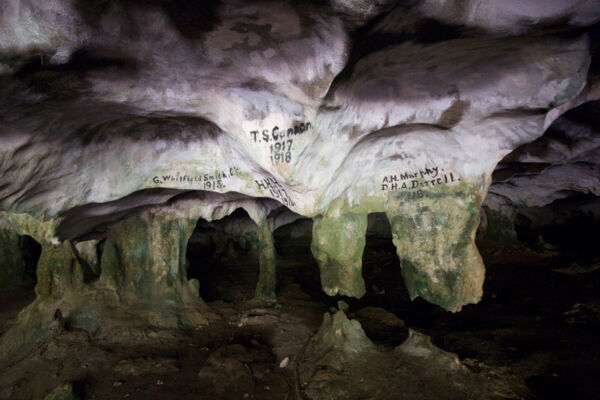
Largely due to graffiti, damage to sensitive cave features, and the harassment of bat populations, all visitors to Conch Bar Caves must be accompanied by a guide.
Conch Bar Caves does not have the developed paths, stairs, and lighting that other tourist attraction caves have, so the visiting experience tends to be a bit more of an adventure. Handheld flashlights provide lighting, and tour guides usually have extras to loan to visitors.
The cave system is all generally on one level with no major ascents or descents, but some areas can be slippery and rough, so an in-depth tour might not be for everyone. It’s advisable to wear shoes or boots.
As is the usual practice for preserved caves, touching the formations and cave is forbidden, as the oils and contaminants on human skin decay the rock surface and interrupt the natural processes of cave development. Care must also be taken during the day so as not to disturb the bats that live in the cave. All types of graffiti and vandalism are illegal and offenders can face stiff fines.
Middle Caicos doesn’t see large numbers of visitors, so Conch Bar Caves doesn’t have regular hours or guides on site. The entrance to the cave is gated, so all visitors must be accompanied by a guide. Call the National Trust at +1 649-941-5710 ahead of your visit to confirm a tour guide is available, especially on weekends.
The usual entrance and guided tour fee is $30 per person. Expect tours to take a little over an hour.
